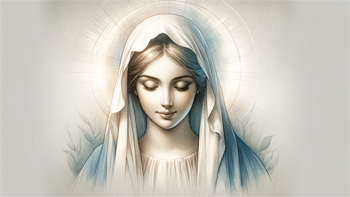Mary, the mother of Jesus, stands as one of the most revered and significant figures in human history. Her life, deeply enshrined in religious texts, has been a source of inspiration, devotion, and intrigue for centuries. This article aims to explore the various facets of Mary's life, her role in the Christian faith, her depiction in art and culture, and her enduring impact on societies worldwide.
The Historical Context of Mary
Mary's story is primarily derived from the Christian Bible, particularly the New Testament. Historians place her life in the 1st century in the region of Galilee. Mary's background, while not extensively documented, suggests she was part of a humble Jewish family in Nazareth. Her betrothal to Joseph, a carpenter, marks a significant point in biblical narratives, leading up to the annunciation by the angel Gabriel of her role as the mother of Jesus.
Mary in Religious Texts
The annunciation, the visitation, the nativity of Jesus, and various events during his life, such as the wedding at Cana and the crucifixion, are key episodes in Christian scriptures involving Mary. These events not only highlight her role as a mother but also underscore her faith and obedience. The Immaculate Conception, a doctrine of the Roman Catholic Church, posits that Mary herself was conceived free from original sin, further elevating her status within Christianity.
Devotion and Veneration
Mary's veneration is most prominent in the Roman Catholic, Eastern Orthodox, Oriental Orthodox, and Anglican churches. She is honored with numerous titles, such as the Blessed Virgin Mary, Our Lady, and the Queen of Heaven. Marian devotion takes various forms, including prayer, artistic depictions, music, and festivals like the Feast of the Immaculate Conception and the Feast of the Assumption.
Mary's Portrayal in Art and Culture
Artistically, Mary has been a central figure in Western art for centuries. From medieval iconography to Renaissance masterpieces, artists like Leonardo da Vinci, Michelangelo, and Raphael have depicted various scenes from her life. In music, Mary has inspired works ranging from Gregorian chants to modern compositions. Literature, too, has seen Mary as a muse, influencing countless writers and poets over the ages.
Mary's Impact on Society and Modern Interpretations
In modern times, Mary continues to inspire religious devotion and artistic expression. Her figure is often seen as a symbol of compassion, mercy, and maternal strength. In feminist theology, Mary's role has been re-examined, leading to new interpretations of her significance as a woman in religious history. Her impact is also evident in popular culture, where her image appears in films, literature, and music, reflecting her enduring relevance.
Mary's Role in Interfaith Dialogues
Mary also holds a significant place in Islam, where she is known as Maryam and is recognized as the mother of Isa (Jesus). Her story in the Quran shares similarities with Christian narratives, underscoring her purity and obedience. This common reverence for Mary in both Christianity and Islam serves as a bridge in interfaith dialogues, promoting mutual respect and understanding between these two major world religions.
In essence, Mary, mother of Jesus, transcends her historical and religious origins to become a figure of universal significance. Her life story, her portrayal in various art forms, and her impact on different cultures and societies underscore her enduring legacy. As a symbol of faith, hope, and maternal love, Mary continues to resonate with millions worldwide, making her story as relevant today as it has been for centuries.

